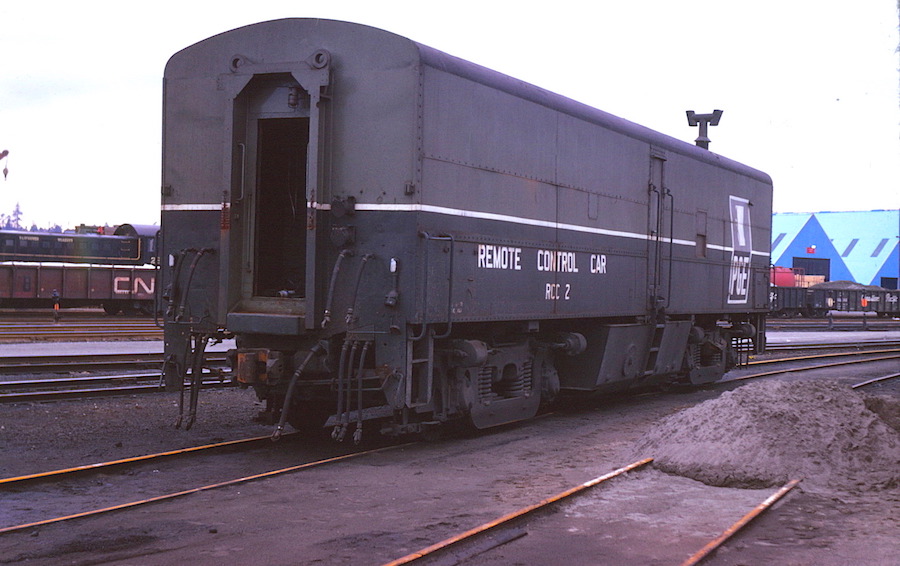
Prior to 1972, the PGE had very little use for covered wagon-type locomotives / equipment;
that notion changed with the development of remote control technology. Within an 8-year span,
the railroad re-purposed ten old Alco, EMD and FM carbodies. The RCC2 (ex-CN FPB4 #6854 was
at Prince George, BC in Spring 1974. (Ernie Johnson photo / R. Craig collection)
| 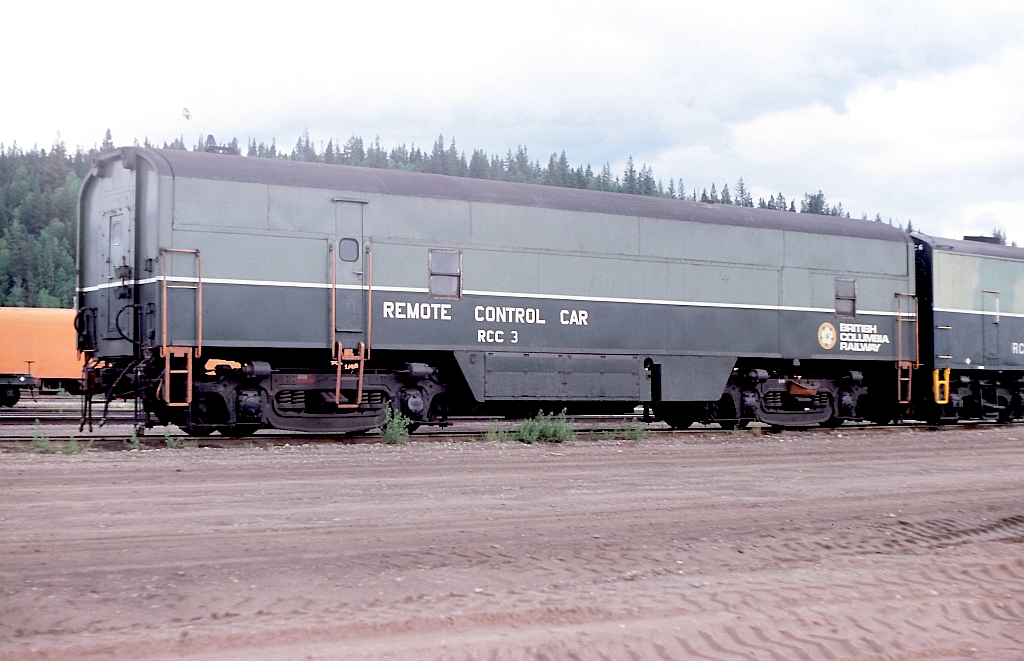
Remote Control Car #3 was one of two similar units on the the railroad. Built as CFB16-4s
by CLC/(FM), the pair originally wore the maroon and gray of Canadian Pacific (#4455 and
4456). The C-Liner trucks and carbody skirting is a small hint of their Kingsbury Ontario
heritage. RCC3 was spotted at Prince George, BC in June 1981. (Doug Lawson photo)
|
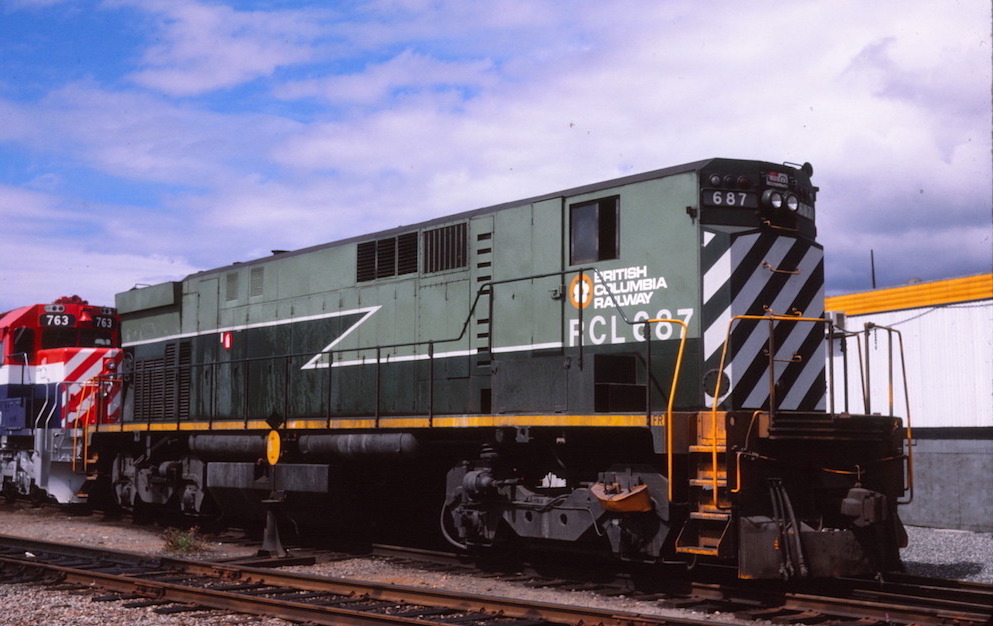
The railroad's motive power stable also included eight cab-less M420Bs manufactured by MLW.
#687 and siblings #681-686 were locotrol receiver (mid-train) units. This scene shows the
ZWT truck-equipped #687 at North Vancouver, BC on 5 August 1985. (Steve Sloan photo)
| 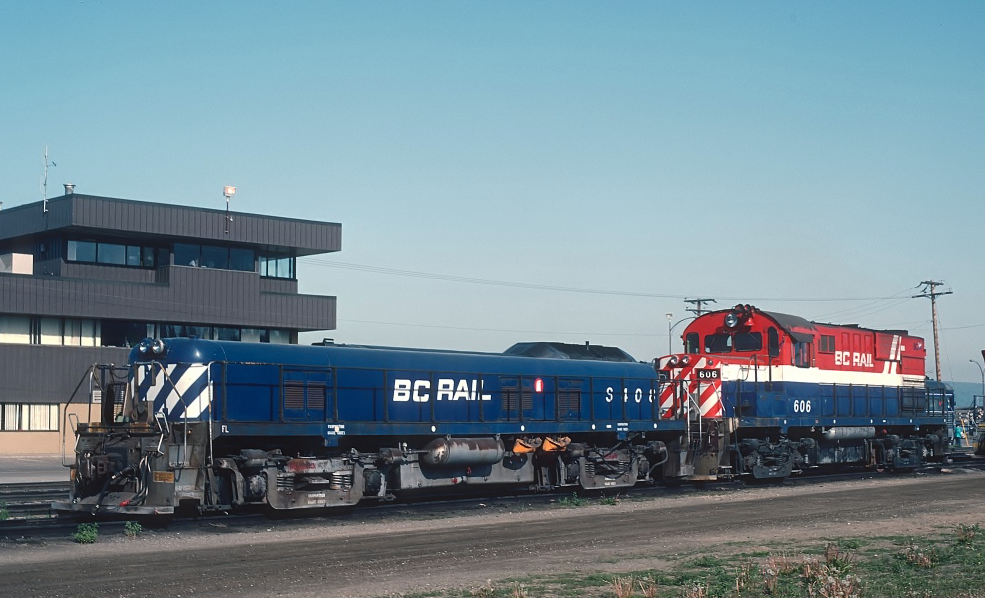
The regional railroad undertook a capital program between 1981 and 1987 that converted ten
aging RS3s in to yard slugs. Prior to its conversion in 1986, Slug 408 had been MLW-built
BCOL/PGE #573. (Marty Bernard photo at Prince George, BC on 23 May 1992.)
|
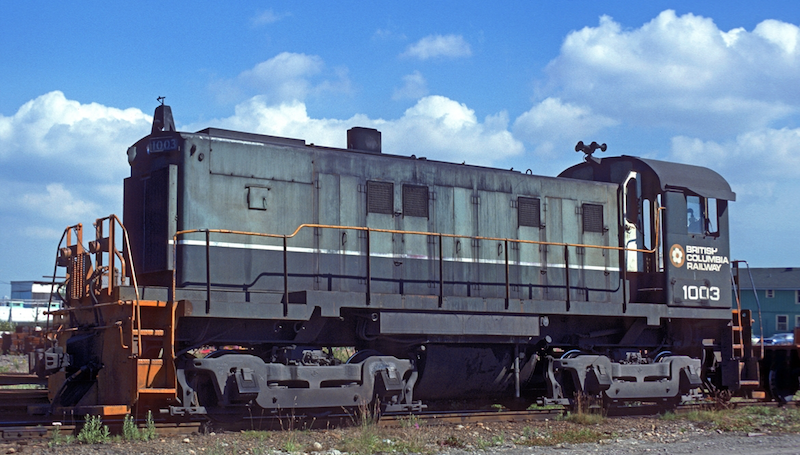
Early in 1959, MLW delivered three 1000-hp yard switchers (#1001, 1002 & 1003) to the PGE.
Designated as S13s, the newcomers were powered by the locomotive builder's latest 6-cylinder
251C power plant. Photographer Matt Herson recorded #1003 at North Vancouver, BC in July 1977.
| 
Interestingly of the several major first generation locomotive builders, neither Baldwin,
EMD nor Lima had representation on the PGE roster, and there had been only one Fairbanks Morse
product, H10-44 #1004 shown here at North Vancouver in August 1974. (Robert Farkas photo)
|
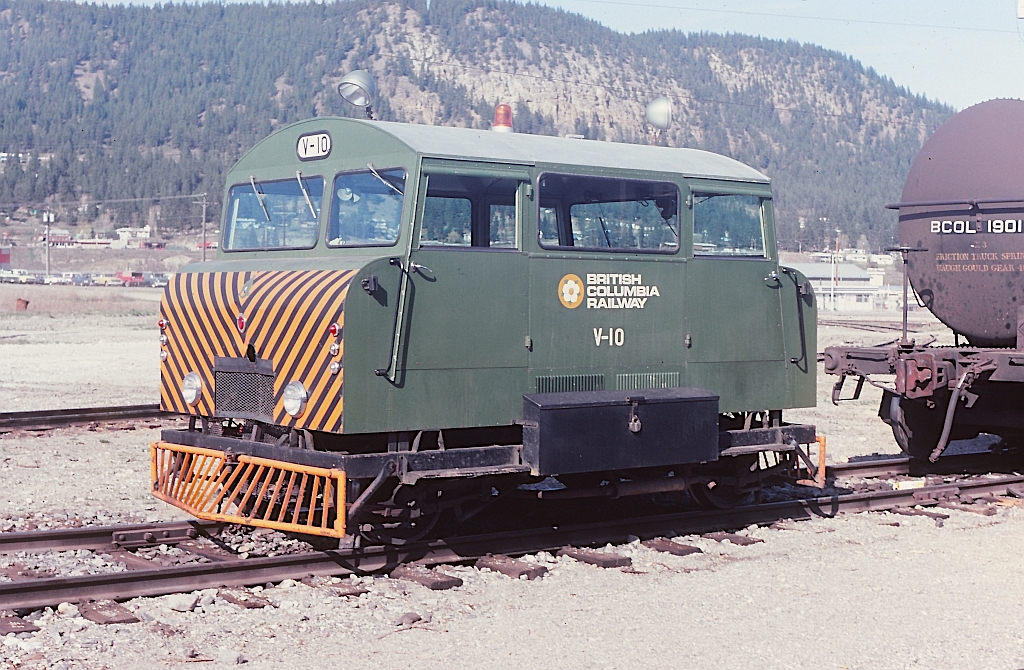
Typically based in Prince George, the V-10 was built by Wickham rail car of England and used
for inspection trips, as well as for supervisors to get out and see the railroad. This photo
shows the four-wheel suspension vehicle at Williams Lake, BC in May 1979. (Doug Lawson photo)
| 
While power short in 1969, PGE leased ex-SP&S FA-2 #868 from Alco. During the old
war-horse's first revenue trip, the crankshaft gave way; consequently the railroad purchased
the loco as a parts source. (George Werkeman photo / R. Craig collection)
|
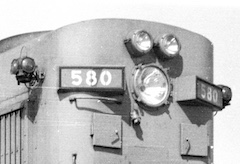 Illuminating the Right-of-Way:Track illumination and locomotive headlights
had been an on-going debate. Engine crew and train safety had been at the heart of the discussion
due to the potential threat rock and mud-slides posed, especially while running at night. The
issue which was explored extensively looked at steam-era, twin-sealed beam, and individual parabolic
aluminized reflector headlights. It is believed the PARs allowed independent aiming to left and to
right to augment illumination on the many curves. These studies were the precursor to ditch lights.
Illuminating the Right-of-Way:Track illumination and locomotive headlights
had been an on-going debate. Engine crew and train safety had been at the heart of the discussion
due to the potential threat rock and mud-slides posed, especially while running at night. The
issue which was explored extensively looked at steam-era, twin-sealed beam, and individual parabolic
aluminized reflector headlights. It is believed the PARs allowed independent aiming to left and to
right to augment illumination on the many curves. These studies were the precursor to ditch lights.
| 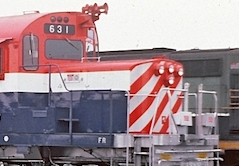 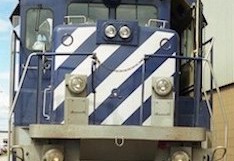
Ken Perry photo (far left), Doug Lawson (center) and Mike Nyiri (right)
|
Abbreviations
- Alco - American Locomotive Company
- ATSF - Atchison Topeka & Santa Fe
- CLC - Canadian Locomotive Company
- CN - Canadian National
- EL - Erie Lackawanna
- EMD - Electro-Motive Division (of GM)
- FM - Fairbansk-Morse
- GMDL - Genral Motors Diesel Locomotive
- KCC- Kennecott Copper Co.
- L&HR - Lehigh & Hudson River
- M-K - Morrison -Knudson, Inc.
- MLW - Montreal Locomotive Works
- O&W - Oneida & Western
- SP&S - Spokane Portland & Seattle
- WCRM - Western Canada RR Museum
- ZWT Trucks - Zero Weight Transfer
|
Thank you -- A special note of thanks goes to Doug Lawson
and Ken Perry for their on-going assistance, technical knowledge and insight!!
Sources:
- Extra 2200 South roster (Oct., Nov., Dec./1971)
- Alco Construction List
- GE Construction List
- Canadian Trackside Guide 2005 (by Bytown Railroad Society)
- Diesel Era Magazine (Jan/FEb 1994; Mar/Apr.1994; and Jul/Aug 1999.
- Flickr.com
- RailPictures.com
- Rail Pictures Canada.ca
- The Diesel Shop rosters
|

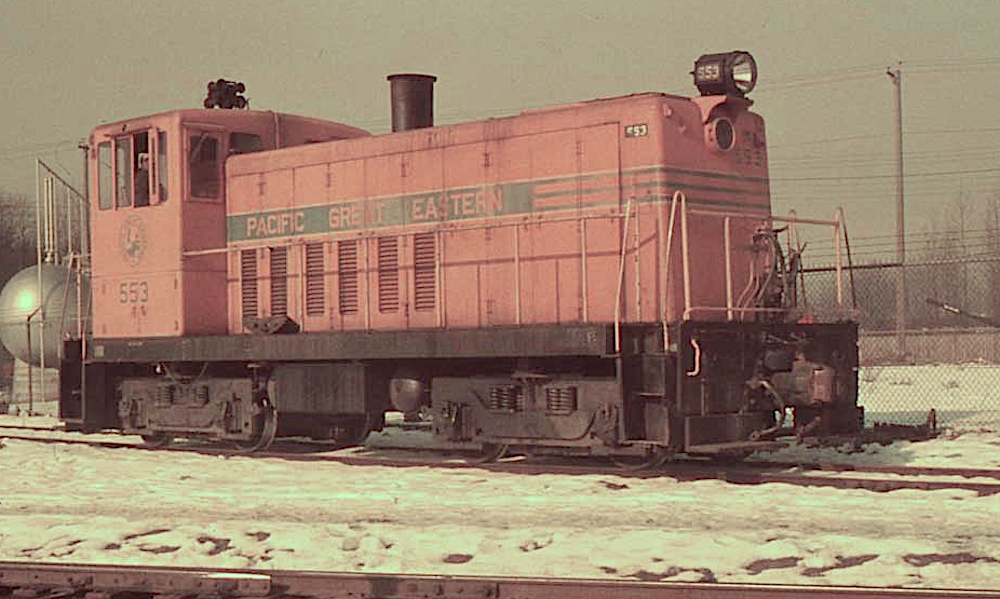 Dieselization" on the PGE
began mid-way through 1948 with delivery of several small industrial-type switchers built
by General Electric; 70-Tonner #553 was among the early arrivals. The loco was scrapped
along with three others in the early 1960s; the only survivors (#551 and 556) reside in
museums. (Photo courtesy of Western Canada Railroad Museum).
Next came a period of total reliance on first and second-generation
power built by Montreal Locomotive Works (Alco); followed by a number of EMD/GMDL locos.
It is assumed the reason BC Rail bought / acquired SD40's was MLW / Bombardier's exit from
new locomotive production business. Additionally, some reports suggested the reliability of
final MLW models was questionable -- plus the SD40's were Canadian built. However, the SD40's
were not very good pullers on the long heavy grades, as compared to the MLW M630s.
Dieselization" on the PGE
began mid-way through 1948 with delivery of several small industrial-type switchers built
by General Electric; 70-Tonner #553 was among the early arrivals. The loco was scrapped
along with three others in the early 1960s; the only survivors (#551 and 556) reside in
museums. (Photo courtesy of Western Canada Railroad Museum).
Next came a period of total reliance on first and second-generation
power built by Montreal Locomotive Works (Alco); followed by a number of EMD/GMDL locos.
It is assumed the reason BC Rail bought / acquired SD40's was MLW / Bombardier's exit from
new locomotive production business. Additionally, some reports suggested the reliability of
final MLW models was questionable -- plus the SD40's were Canadian built. However, the SD40's
were not very good pullers on the long heavy grades, as compared to the MLW M630s.
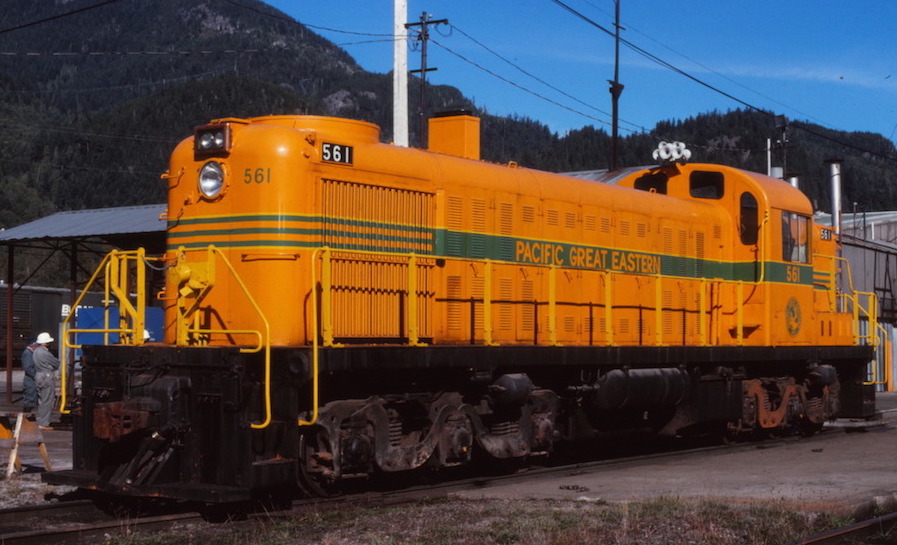
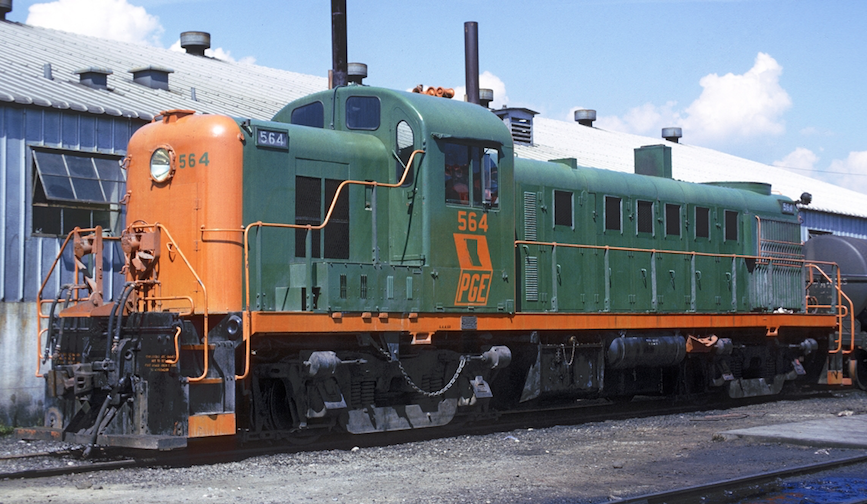
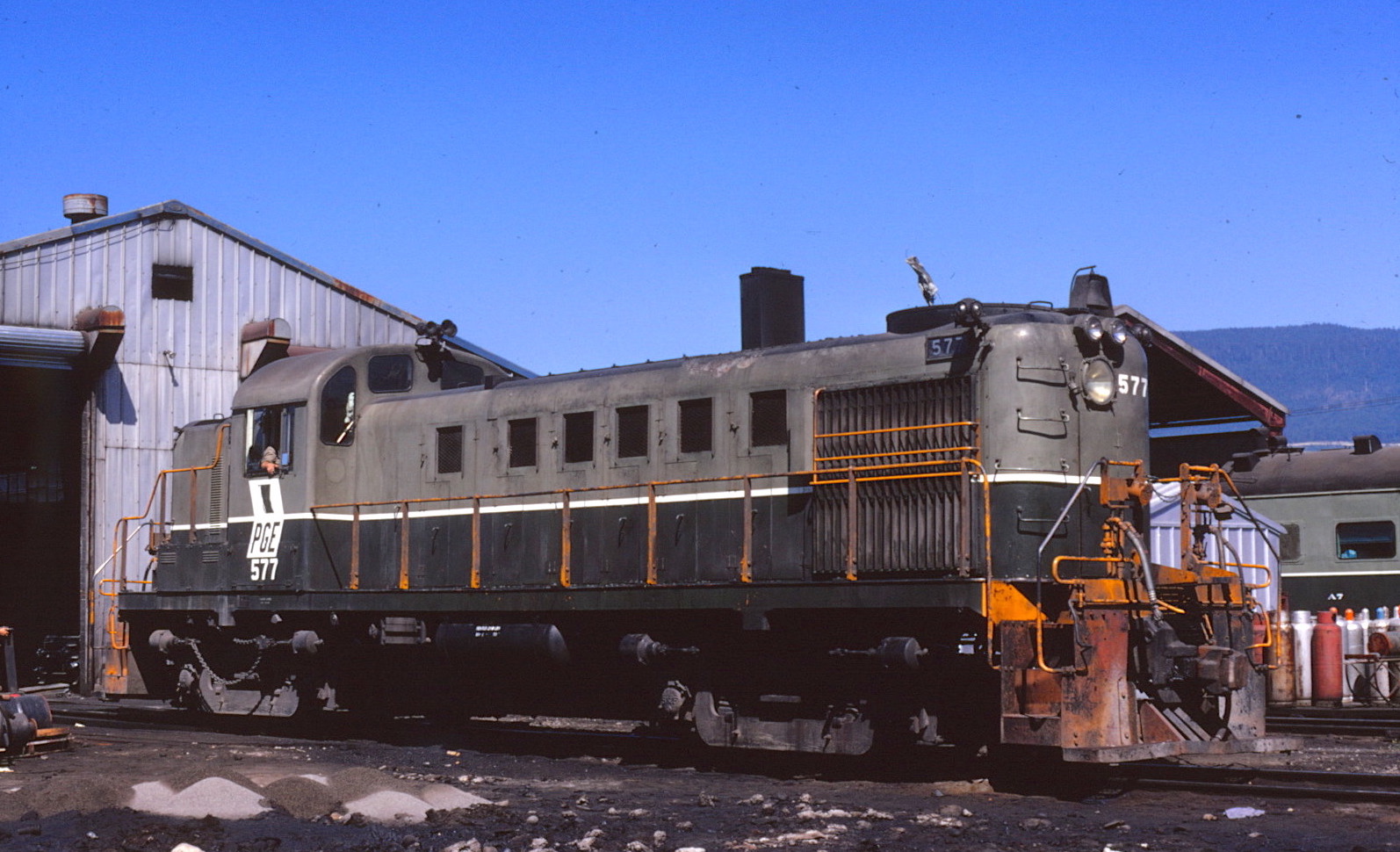
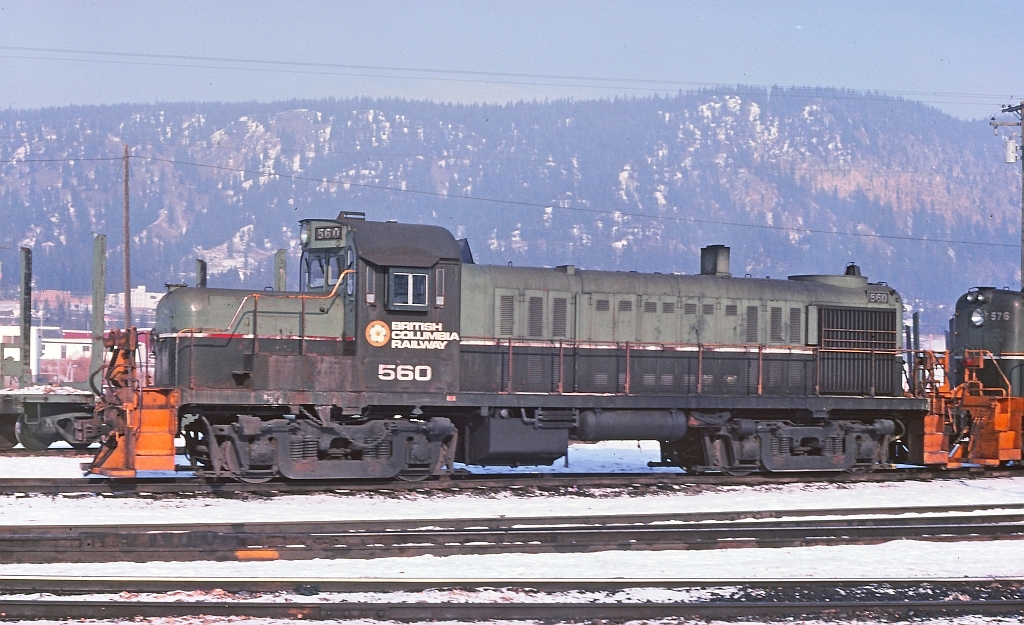
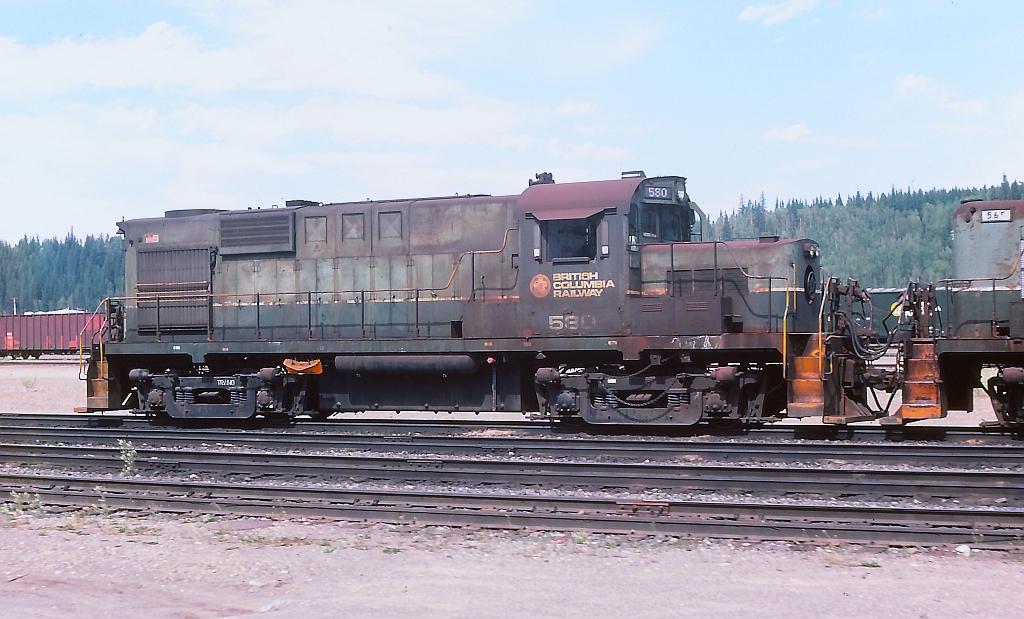
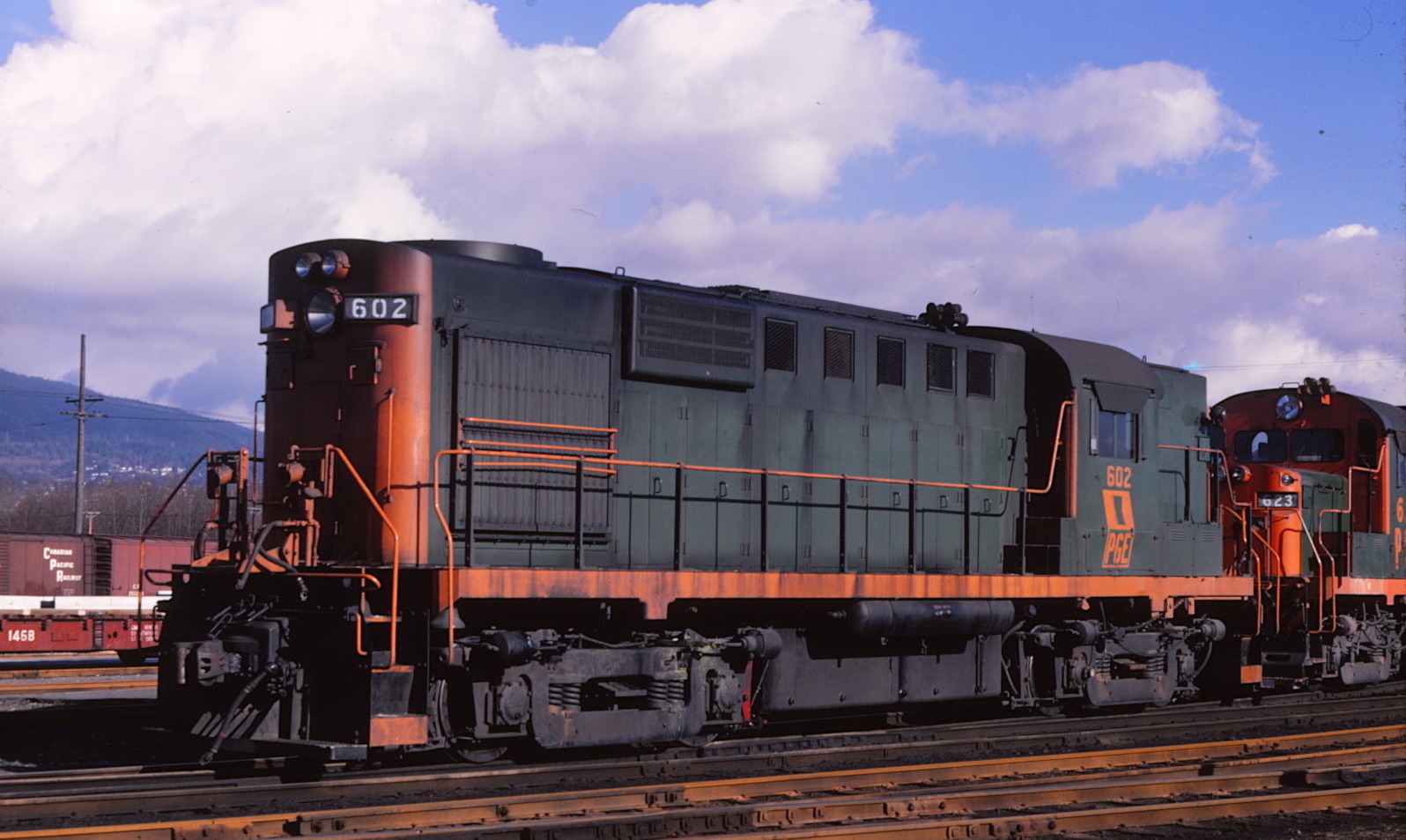
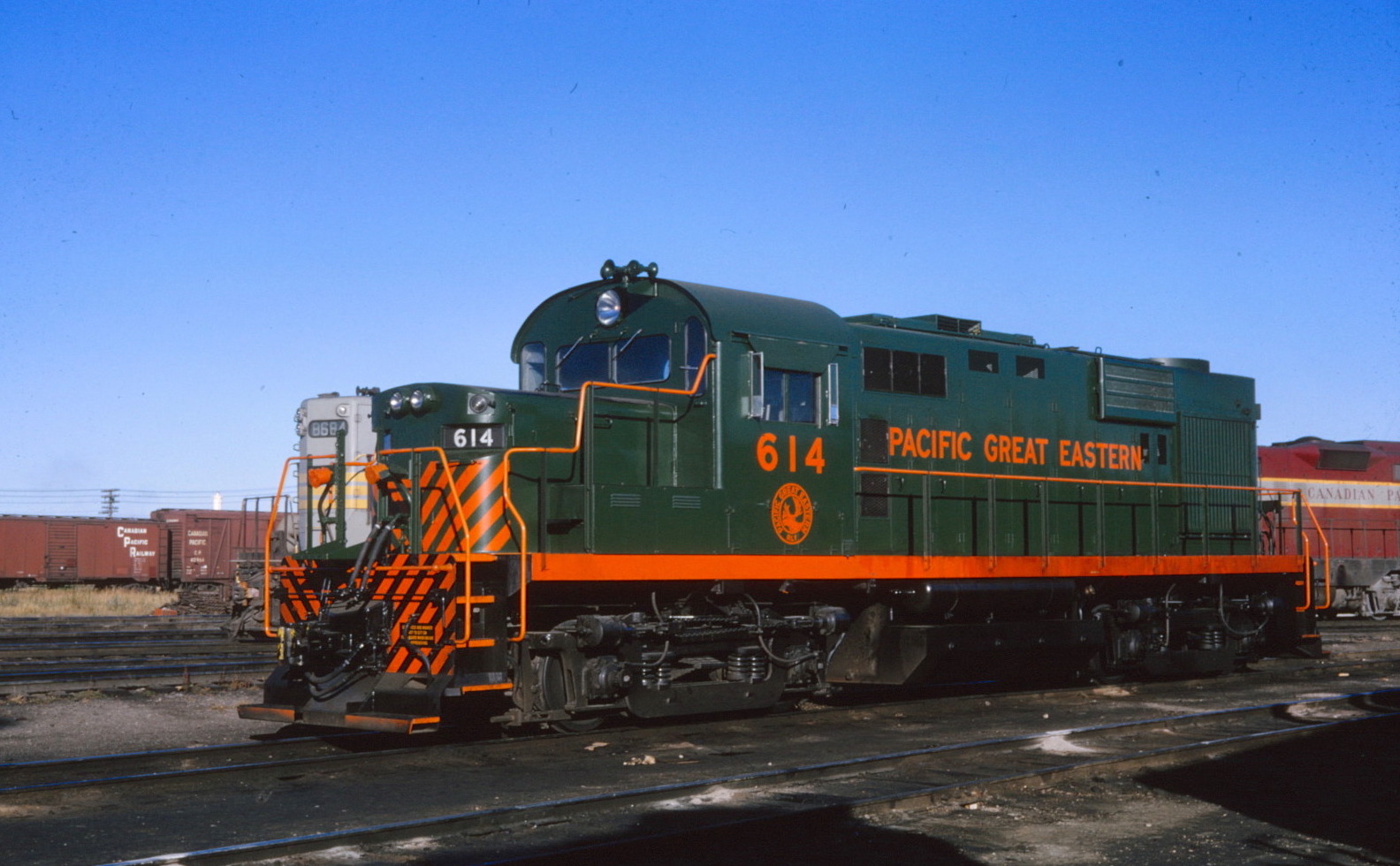
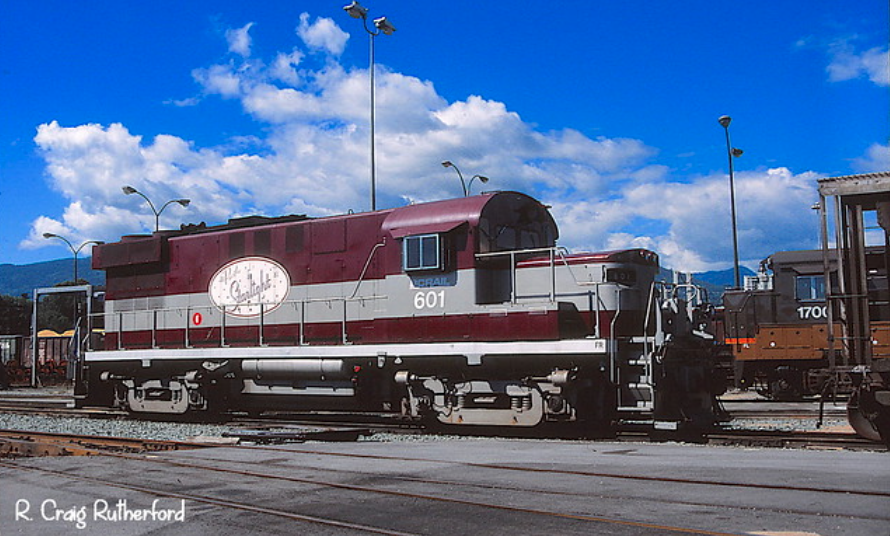
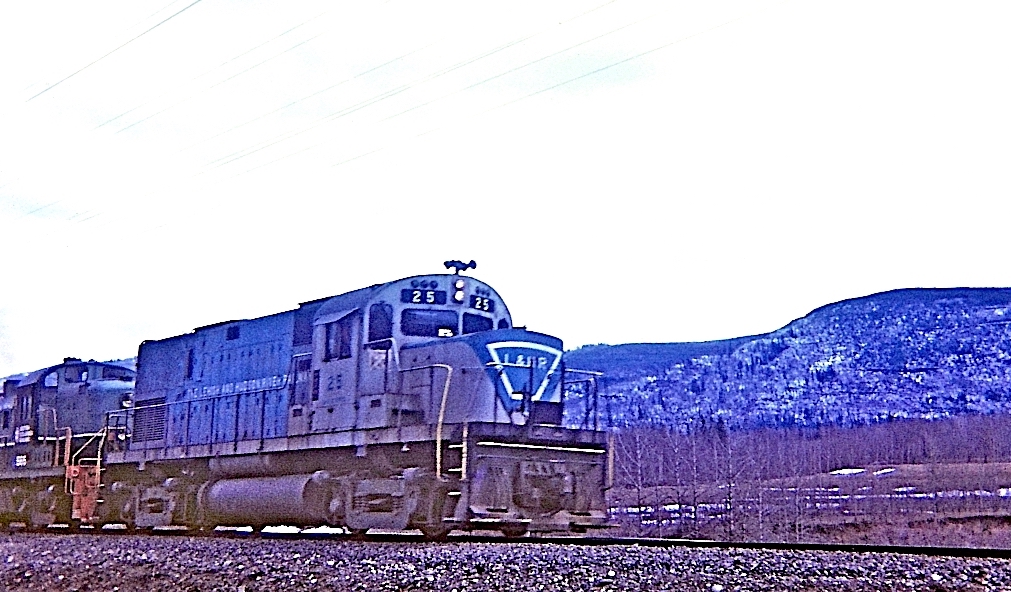
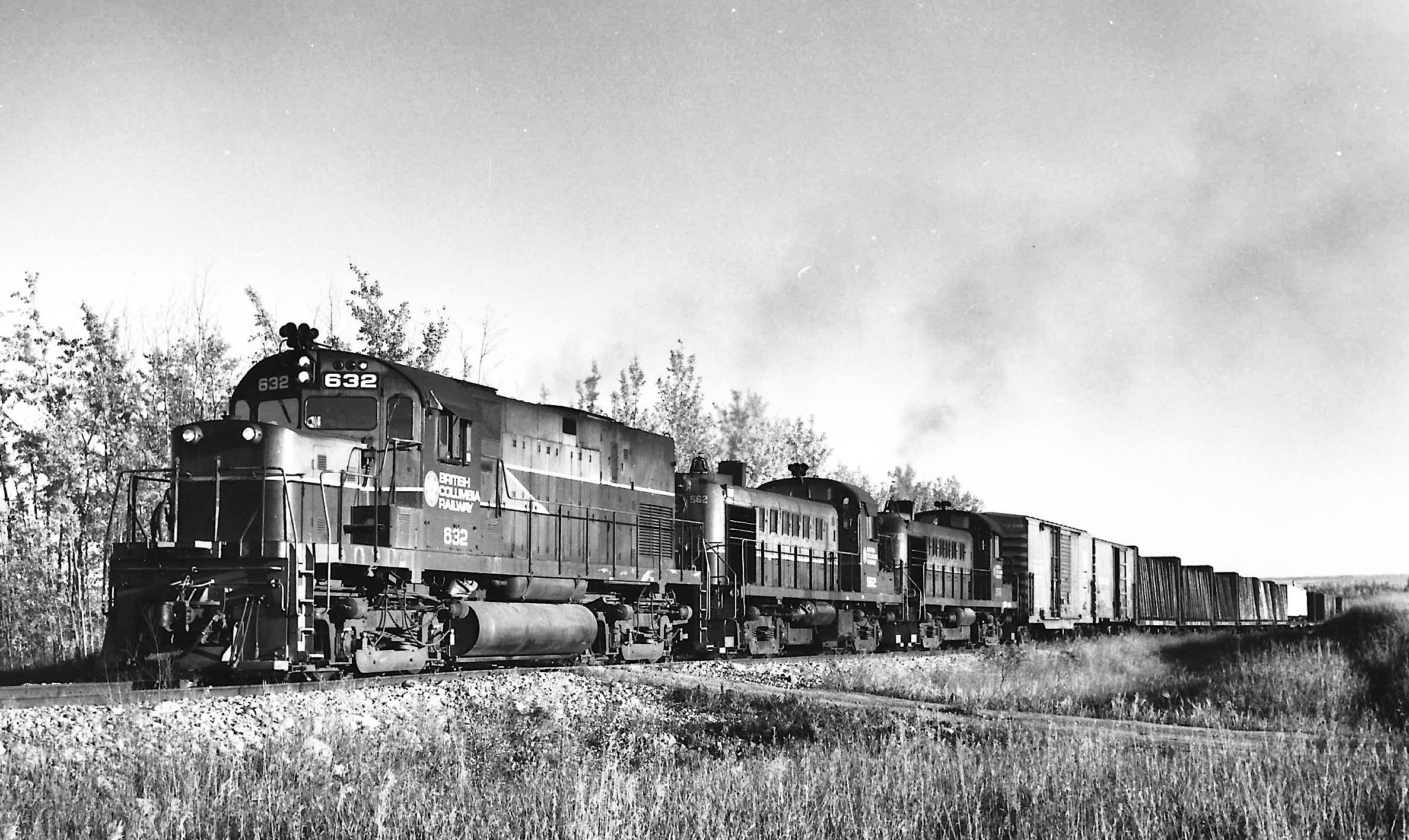
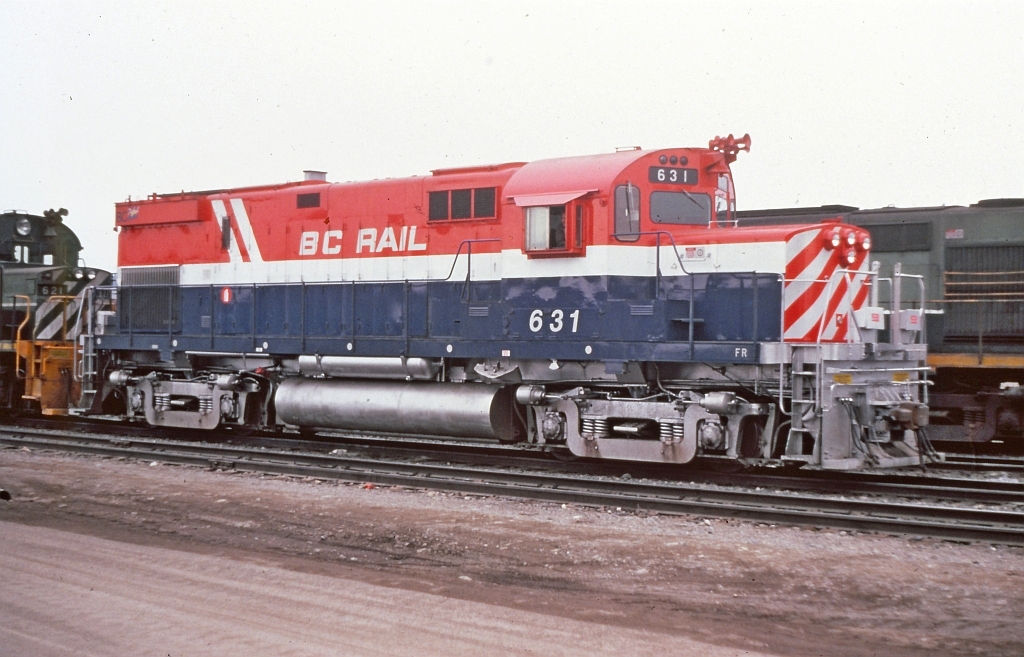
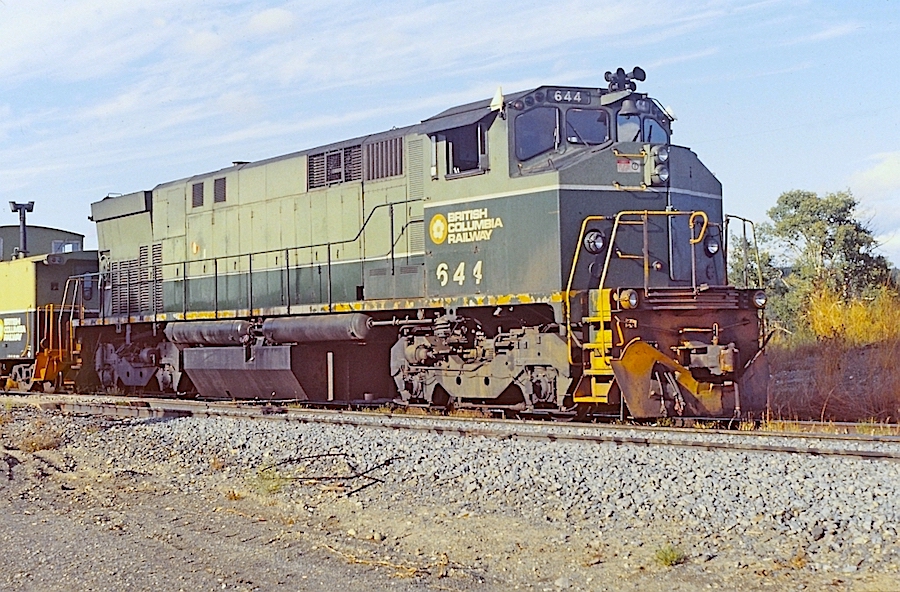
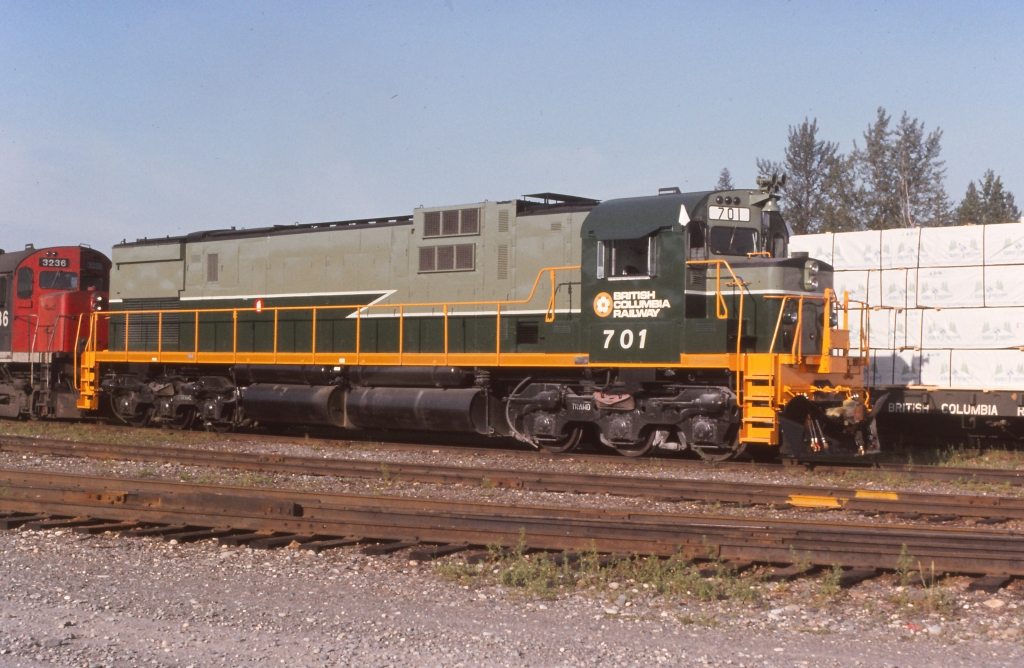
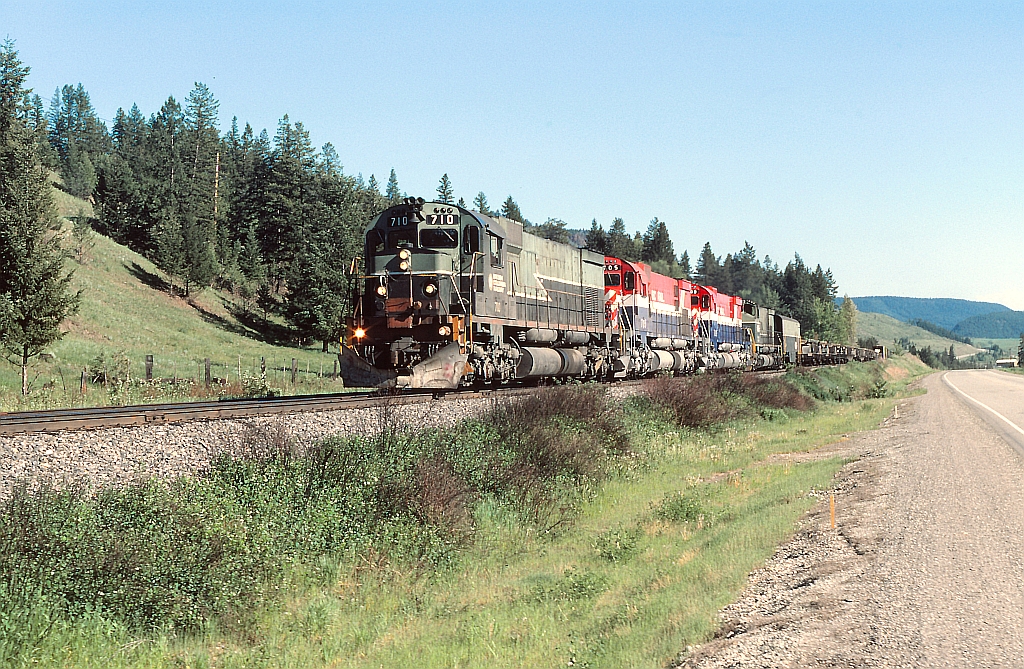







 Illuminating the Right-of-Way:Track illumination and locomotive headlights
had been an on-going debate. Engine crew and train safety had been at the heart of the discussion
due to the potential threat rock and mud-slides posed, especially while running at night. The
issue which was explored extensively looked at steam-era, twin-sealed beam, and individual parabolic
aluminized reflector headlights. It is believed the PARs allowed independent aiming to left and to
right to augment illumination on the many curves. These studies were the precursor to ditch lights.
Illuminating the Right-of-Way:Track illumination and locomotive headlights
had been an on-going debate. Engine crew and train safety had been at the heart of the discussion
due to the potential threat rock and mud-slides posed, especially while running at night. The
issue which was explored extensively looked at steam-era, twin-sealed beam, and individual parabolic
aluminized reflector headlights. It is believed the PARs allowed independent aiming to left and to
right to augment illumination on the many curves. These studies were the precursor to ditch lights.

